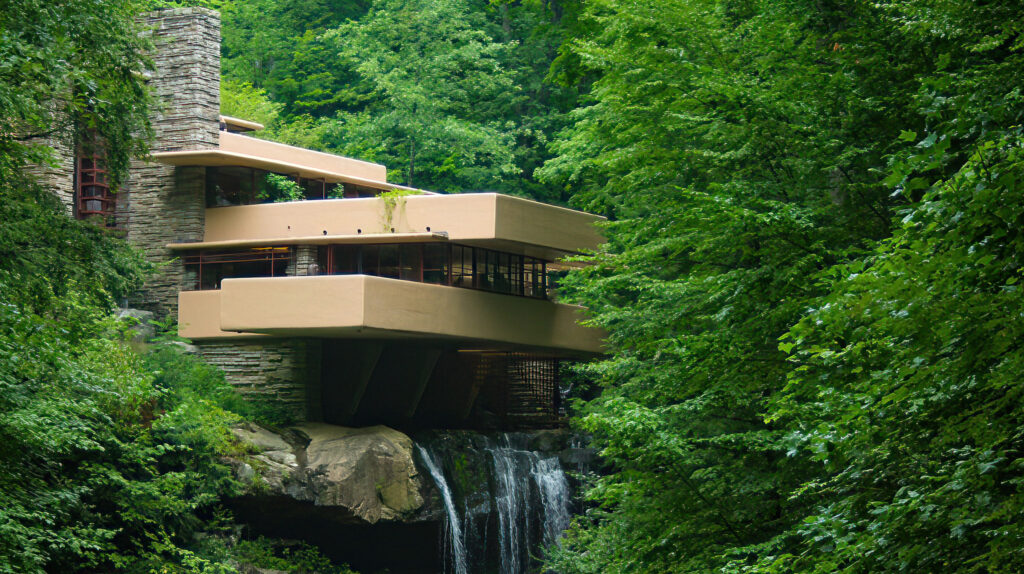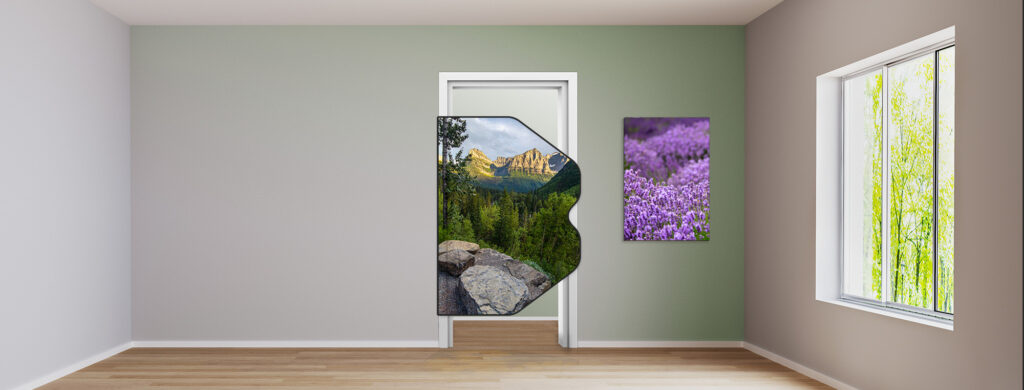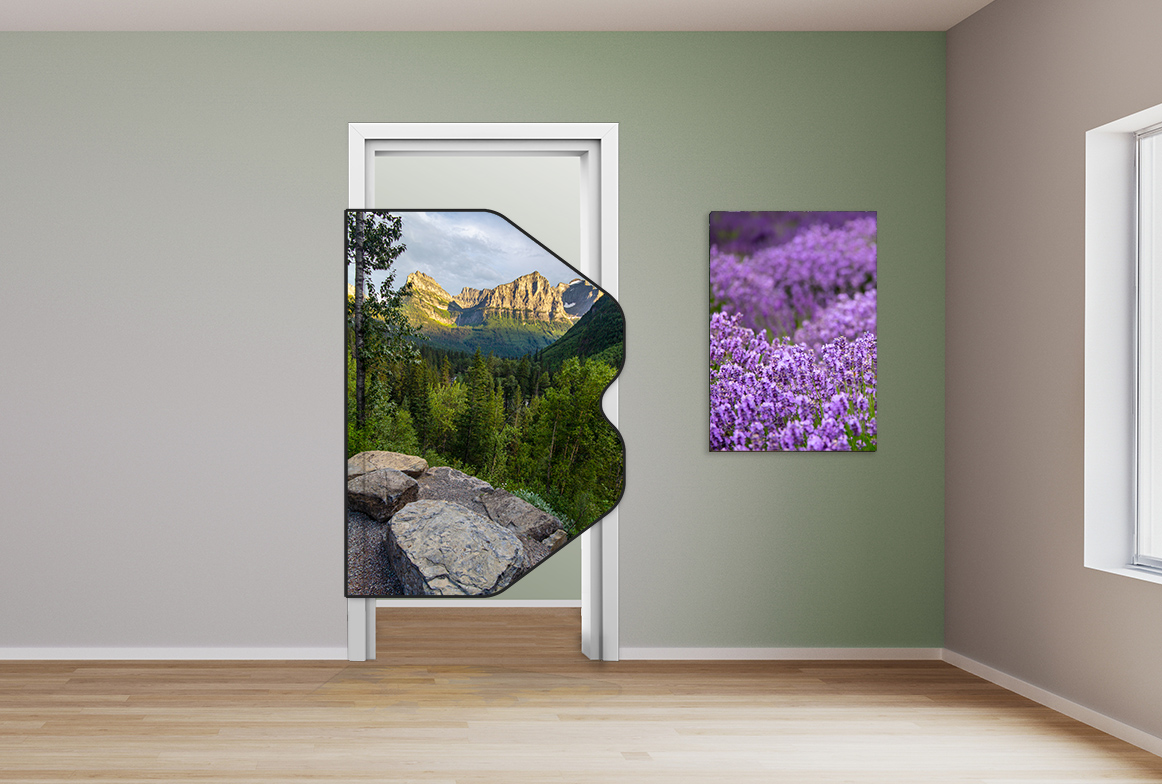It’s no mystery that humans are attracted to nature — the summer crowds at Yellowstone can attest to that! In 1973, this relationship got a name, and it’s called biophilia. Nature revives us. It impacts us psychologically, emotionally, and socially. People often say that when they head into the wilderness, they go to “recharge their batteries,” and that really is the case!

Taking nature into account when designing new buildings is nothing new. In 1935, Frank Lloyd Wright famously did this in his design, Fallingwater. It’s a house in the Laurel Highlands of southwest Pennsylvania. His cantilever design embedded the home in the rocks above a waterfall, beautifully harmonizing the home with nature. Since Fallingwater, designers have applied the biophilia concept to countless buildings, attempting their nature harmonization in projects of all types.
Biophilia: The love of nature – “It recognizes the intrinsic need for nature in our lives, including its psychological benefits.” (3)
In recent years, research has driven a push to build with nature at the forefront. The book Biophilic design: The theory, science, and practice of bringing buildings to life describes the paradigm shift, saying the biophilic design is “critical to human health, performance, and well-being.” (2) That book, as much as anything else, has begun a revolution in design.
Research proves the value of incorporating nature into buildings, but it’s undoubtedly more important in mental health facilities. Healthcare Design Magazine wrote, “Because biophilia inherently results in environments that soothe, comfort, orient, and calm, it’s specifically relevant to the design of spaces that support behavioral health.” (3) New construction using biophilic design principles, isn’t an option for most. With that in mind, is it possible to apply some of the concepts?
“Patients don’t have access to the outdoors, so the onus was even greater on the design to provide ties to nature.” (3)
It turns out we don’t have to be in a forest to get the benefit. Photographs of nature can transport you to places that refresh you. In one study, researches had participants watch a few minutes of the popular documentary, “Planet Earth.” Afterwards, up to 46% reported feelings of awe, gratitude, and reverence. Other studies have shown people feel more connected, generous, and kinder after viewing images of nature. (2) In the same way a person might negatively react to a picture of a spider or a snake, they will positively react to a beautiful view of nature.

It’s easy to bring the benefits of biophilic design to existing patient rooms

“Our behavioral health suites have been transformed not only into a safer environment but those that offer calm and comforting images. The once dull spaces now offer our patients beautiful imagery during the often dark times.”
Carlie Mertens, CentraCare-Monticello, Minnesota

The Kennon Door 2.0 is an easy, safe way to incorporate biophilia into patient recovery. Patient rooms tend to be aesthetically sterile. With its natural curves and vibrant photography, the door can be very impactful: facilitating patient recovery while maintaining its primary function. Kennon’s Soft Suicide Prevention Art (SSPA) is another easy way to implement a biophilic design in your facility. In both cases, the look is of fine art without the dangers of wire, hooks, nails, or other hazards.



(1) Greene, K., & Keltner, D. (2017, March 1). What happens when we reconnect with nature. Greater Good Magazine. https://greatergood.berkeley.edu/article/item/what_happens_when_we_reconnect_with_nature
(2) Kellert, S. R., Heerwagen, J., & Mador, M. (2013). Biophilic design: The theory, science and practice of bringing buildings to life. John Wiley & Sons.
(3) Clark, E., & Brennan, M. (2017, January 6). Natural remedy: Biophilic design supports behavioral health. HCD Magazine – Architecture & Interior Design Trends for Healthcare Facilities. https://healthcaredesignmagazine.com/projects/natural-remedy-biophilic-design-supports-behavioral-health
